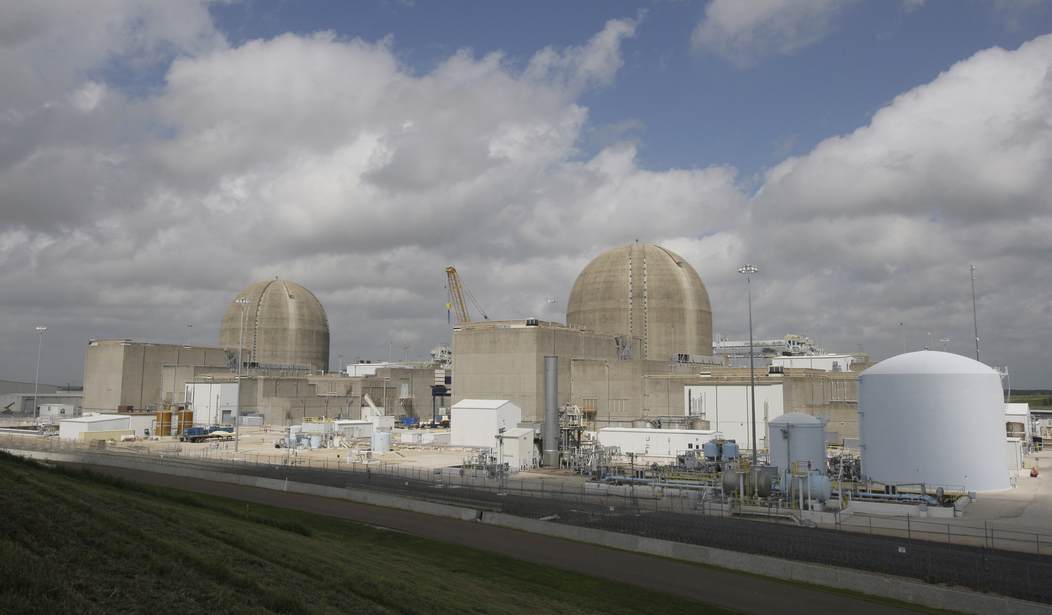Every major advancement in humankind's technology has been accompanied by an increase in the energy density of prevalent fuels. From wood to charcoal to coal to oil and natural gas, increases in technology, lifestyles, and standards of living have always gone along with increases in energy density. The fuel today with the greatest energy density is nuclear fuel; a chunk of enriched uranium the size of a thumbnail contains as much energy as one ton of coal, 120 gallons of oil, or 17,000 cubic feet of natural gas.
So when our nearest neighbor, Canada, has the potential to become the Saudi Arabia of uranium, the United States should sit up and take notice.
In 2011, the Fukushima nuclear plant disaster in Japan badly damaged the world's view of nuclear power, and the price for the heavy metal - a critical component for nuclear fuel - cratered.
But the last five years has seen a reversal, with the global price of uranium spiking by more than 200%, becoming one of this year's top-performing commodities.
Mr Curyer, an Australian-born businessman, credits this to a changing attitude that began soon after Microsoft founder Bill Gates touted nuclear energy as “ideal for dealing with climate change” in 2018.
Four years later, then-UK Prime Minister Boris Johnson pushed forward a policy of generating at least 25% of the country’s energy from nuclear.
Shortly after, the European Union voted to declare nuclear energy climate-friendly.
These events were “catalytic” for the uranium industry and a turning point for Mr Curyer's company NexGen, which is behind the largest in-development uranium mine in Canada.
And there's a lot of uranium in the Athabasca basin.
NexGen, whose project is located in Canada's remote, uranium-rich Athabasca Basin in northern Saskatchewan, is now worth nearly $4bn (£2.98bn), despite the fact that the mine won’t be commercially operational until at least 2028.
If fully cleared by regulators, NexGen’s project alone could push Canada to become the world’s largest producer of uranium over the coming decade, knocking Kazakhstan out of the number one spot.
Other companies have also rushed to Saskatchewan to capitalise on the boom, starting their own exploration projects in the region, while existing players re-opened dormant mines.
There's an opportunity here for the United States as well. Canada does restrict who it sells uranium to; they require the agreement that the fuel will only be used for energy generation, which the United States should have no trouble agreeing to. Most nuclear fuels from various regions have a distinct radiological thumbprint, so if required, it wouldn't be hard to show that any fuel used in weaponry came from domestic sources — although whether that's enough for Canada remains to be seen, since they could argue that buying uranium from the Great White North frees up our domestic production for... other purposes.
But we aren't building many new "hot rock" nuclear weapons these days.
The fact is, if there is to be any "clean energy" future, in the United States or anywhere else, nuclear power will have to be a part of it. And there is an opportunity for the incoming Trump administration to streamline the permitting process, especially for the new modular reactors.
See Related: The Federal Government Is Reviving the Nuclear Industry—It’s Time for Missouri to Follow Suit
Of course, there is always the effort to come up with a workable, economically viable fusion reactor, which would kick the energy-density game to the next level. But that technology, sadly, always seems to be thirty or forty years away — just as it was thirty or forty years ago.
See Related: For Real This Time? Japanese Startup Claims Steady-State Nuclear Fusion Reactor to Launch by 2034
Various companies now seem to be lining up for a shot at the Athabasca Basin's uranium deposits. But, a note of caution is in order, as that has happened before — and bringing a new mine into production is the work of years, even decades.
NexGen anticipates that construction on its mine - which is awaiting clearance from Canada’s federal nuclear regulator - will begin early next year.
Mr Gitzel says around 100 other companies are now actively exploring Saskatchewan for deposits.
As to when it will be on the market remains unclear.
We do, of course, have our own domestic sources, which are considerable.
Nuclear power is the energy source of the future. We can't wait for the day when fusion power becomes economically viable, either. America's energy requirements in coming decades will be increasing, not decreasing, and anyone who has looked at the data knows that wind, solar, and other "green" sources won't meet the needs. We need nuclear power, we need reliable, friendly sources of uranium to augment our own production, and we need to streamline the process for approving new reactors. That's something the Trump administration should be looking at very hard, and January 20th seems a good day to start.














Join the conversation as a VIP Member